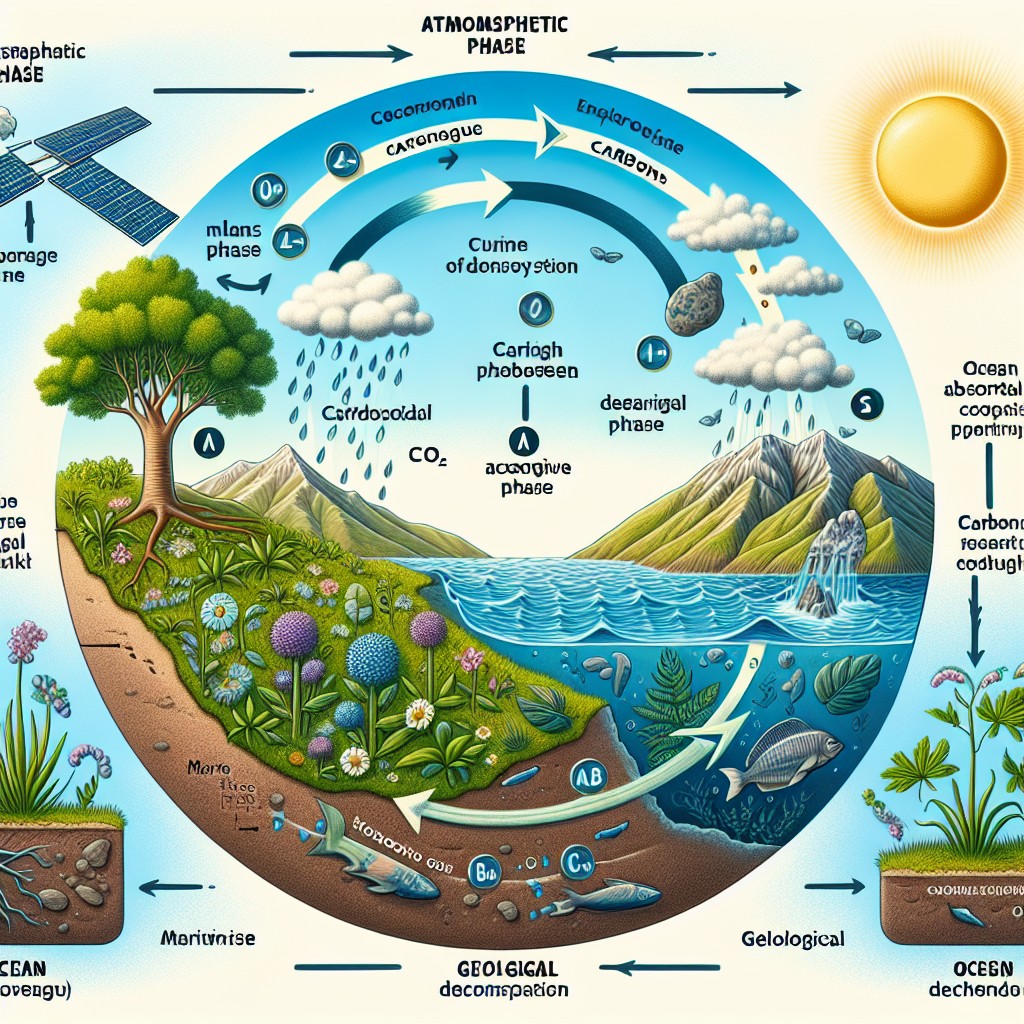Air and water quality play a crucial role in maintaining human health. The quality of the air we breathe and the water we consume can have a significant impact on our overall well-being. Poor air and water quality can lead to a range of health problems, including respiratory issues, cardiovascular disease, and gastrointestinal illnesses. In this blog post, we will explore the state of air and water quality in the UK, discuss the health risks associated with poor quality, and provide tips on how to protect ourselves and our communities.
The purpose of this blog post is to raise awareness about the importance of air and water quality on human health and to provide practical information on how individuals and communities can take steps to improve these conditions. By understanding the sources of air and water pollution, as well as the health risks associated with them, we can make informed decisions to protect ourselves and our loved ones.
Summary
- Air and water quality have a significant impact on our health.
- The UK has poor air quality, which can lead to respiratory and cardiovascular problems.
- Contaminated drinking water poses health risks, and treatment and purification are crucial.
- Environmental regulations play a vital role in improving air and water quality.
- We can all take steps to improve air and water quality in our communities.
The State of Air Quality in the UK: An Overview
Air pollution is a significant issue in the UK, with many areas exceeding the legal limits set by the European Union. According to a report by the Royal College of Physicians and the Royal College of Paediatrics and Child Health, air pollution contributes to around 40,000 premature deaths in the UK each year. The main sources of air pollution include vehicle emissions, industrial activities, and domestic heating.
Exposure to poor air quality can have severe health impacts. It can irritate the respiratory system, leading to symptoms such as coughing, wheezing, and shortness of breath. Long-term exposure to air pollution has been linked to respiratory conditions such as asthma, chronic obstructive pulmonary disease (COPD), and even lung cancer. Children, older adults, and individuals with pre-existing respiratory conditions are particularly vulnerable to the effects of poor air quality.
The Effects of Poor Air Quality on Respiratory Health
Air pollution can have a detrimental effect on respiratory health. When we breathe in polluted air, harmful particles and gases can enter our respiratory system and cause inflammation and damage to the lungs. This can lead to a range of respiratory conditions, including asthma, bronchitis, and pneumonia.
Asthma is a chronic condition characterized by inflammation of the airways, which causes wheezing, coughing, and difficulty breathing. Exposure to air pollution can trigger asthma attacks and worsen symptoms in individuals with the condition. Long-term exposure to air pollution has also been linked to the development of asthma in children.
In addition to asthma, poor air quality has been associated with an increased risk of lung cancer. The World Health Organization (WHO) has classified outdoor air pollution as a leading environmental cause of cancer deaths. The harmful particles and chemicals present in polluted air can damage the DNA in our cells and increase the risk of developing lung cancer.
To protect respiratory health in areas with poor air quality, it is essential to take certain precautions. Avoiding outdoor activities during times of high pollution, using air purifiers indoors, and wearing masks when necessary can help reduce exposure to harmful pollutants. It is also important to seek medical advice if you experience persistent respiratory symptoms or if you have a pre-existing respiratory condition.
The Link Between Air Pollution and Cardiovascular Disease
| Study | Location | Sample Size | Findings |
|---|---|---|---|
| Brook et al. (2010) | United States | 5,118 | Long-term exposure to PM2.5 increases risk of cardiovascular disease mortality |
| Chen et al. (2017) | China | 8,867 | Exposure to PM2.5 increases risk of cardiovascular disease hospitalization |
| Shah et al. (2019) | India | 1,234 | Exposure to PM2.5 and NO2 increases risk of cardiovascular disease mortality |
Air pollution not only affects respiratory health but also has a significant impact on cardiovascular health. When we inhale polluted air, the harmful particles can enter our bloodstream and cause inflammation throughout the body. This inflammation can lead to the development of cardiovascular diseases such as heart disease and stroke.
Long-term exposure to air pollution has been linked to an increased risk of heart disease. The harmful particles in polluted air can damage blood vessels, leading to atherosclerosis (hardening of the arteries) and increasing the risk of heart attacks and other cardiovascular events. Studies have also shown that exposure to air pollution can increase blood pressure and promote the formation of blood clots, further increasing the risk of heart disease.
Air pollution has also been associated with an increased risk of stroke. The inflammation caused by exposure to polluted air can lead to the formation of blood clots, which can block blood flow to the brain and cause a stroke. Studies have shown that individuals living in areas with high levels of air pollution have a higher risk of stroke compared to those living in areas with cleaner air.
To protect cardiovascular health in areas with poor air quality, it is important to take steps to reduce exposure to pollutants. This includes avoiding outdoor activities during times of high pollution, using air purifiers indoors, and ensuring good ventilation in your home. It is also important to maintain a healthy lifestyle by eating a balanced diet, exercising regularly, and not smoking.
Water Quality in the UK: Challenges and Concerns
While the UK has made significant progress in improving water quality over the years, there are still challenges and concerns that need to be addressed. The main challenges facing water quality in the UK include agricultural runoff, industrial pollution, and aging infrastructure.
Agricultural runoff is a major source of water pollution in the UK. The use of fertilizers and pesticides in agriculture can contaminate water sources, leading to the presence of harmful chemicals and bacteria. This can pose a risk to human health when contaminated water is consumed or used for bathing.
Industrial pollution is another significant concern for water quality. Industrial activities can release pollutants such as heavy metals, chemicals, and toxins into water sources. These pollutants can have detrimental effects on human health when ingested or when they come into contact with the skin.
Aging infrastructure is also a challenge for water quality in the UK. Many water treatment plants and distribution systems are outdated and in need of repair or replacement. This can lead to issues such as leaks, contamination, and inadequate treatment of water, compromising its quality and safety.
The Health Risks of Contaminated Drinking Water

Contaminated drinking water can pose serious health risks. When water sources are contaminated with harmful bacteria, viruses, chemicals, or heavy metals, consuming the water can lead to a range of health problems.
Gastrointestinal illnesses are a common health condition associated with contaminated drinking water. Bacteria such as E. coli and Salmonella can cause symptoms such as diarrhea, vomiting, and stomach cramps when ingested through contaminated water. These illnesses can be particularly dangerous for young children, older adults, and individuals with weakened immune systems.
Contaminated drinking water has also been linked to an increased risk of certain types of cancer. Chemicals such as arsenic and benzene, which can be present in contaminated water sources, have been associated with an increased risk of bladder, kidney, and liver cancer. Long-term exposure to these chemicals through drinking water can have serious health consequences.
Water treatment and purification play a crucial role in protecting against the health risks associated with contaminated drinking water. Treatment processes such as filtration, disinfection, and chemical treatment can remove or neutralize harmful contaminants, making the water safe for consumption. It is important to ensure that your drinking water comes from a reliable source that has undergone proper treatment and purification.
The Importance of Water Treatment and Purification
Water treatment and purification are essential for ensuring access to clean drinking water. The process of treating and purifying water involves several steps to remove or neutralize contaminants and make the water safe for consumption.
The first step in the water treatment process is usually filtration. This involves passing the water through various filters to remove particles such as sediment, dirt, and debris. Filtration helps to improve the clarity and appearance of the water.
After filtration, disinfection is typically carried out to kill any remaining bacteria, viruses, or parasites in the water. Common methods of disinfection include the use of chlorine, ultraviolet (UV) light, or ozone. Disinfection is crucial for preventing the spread of waterborne diseases and ensuring that the water is safe to drink.
Chemical treatment may also be used in the water treatment process to remove or neutralize specific contaminants. For example, activated carbon filters can remove organic chemicals, such as pesticides and solvents, from the water. Ion exchange resins can be used to remove heavy metals, such as lead and mercury.
Access to clean drinking water has numerous benefits for our health. It reduces the risk of waterborne diseases, improves hydration, and supports overall well-being. It is important to ensure that your drinking water comes from a reliable source that has undergone proper treatment and purification.
The Role of Environmental Regulations in Improving Air and Water Quality
Government regulations play a crucial role in protecting air and water quality. Environmental regulations set standards for acceptable levels of pollutants in the air and water and establish guidelines for industries and individuals to follow.
Environmental regulations help to reduce pollution by setting limits on emissions from industrial activities, vehicles, and other sources. They also promote the use of cleaner technologies and practices that minimize pollution. By enforcing these regulations, governments can hold polluters accountable and ensure that they take steps to reduce their impact on air and water quality.
The impact of environmental regulations on public health is significant. Studies have shown that stricter air quality standards can lead to improvements in respiratory health, reduced hospital admissions for respiratory conditions, and a decrease in premature deaths related to air pollution. Similarly, regulations on water quality have been effective in reducing the incidence of waterborne diseases and improving overall public health.
In the UK, there are several environmental regulations in place to protect air and water quality. These include the Air Quality Standards Regulations, which set limits on pollutants such as nitrogen dioxide and particulate matter in the air, and the Water Quality Regulations, which establish standards for the quality of drinking water and bathing water.
Steps You Can Take to Improve Air and Water Quality in Your Community
As individuals and communities, there are steps we can take to improve air and water quality in our surroundings. By making small changes in our daily lives, we can contribute to a cleaner and healthier environment.
To reduce air pollution in your community, consider using public transportation or carpooling instead of driving alone. This can help reduce vehicle emissions, which are a major source of air pollution. You can also reduce energy consumption by using energy-efficient appliances, turning off lights when not in use, and insulating your home properly. This helps to reduce the demand for energy production, which often involves burning fossil fuels and contributes to air pollution.
To protect water quality in your community, it is important to properly dispose of hazardous waste such as chemicals, paints, and oils. These substances can contaminate water sources if not disposed of correctly. You can also conserve water by fixing leaks, using water-saving devices, and being mindful of your water usage. Conserving water helps to reduce the strain on water sources and ensures that there is enough clean water available for everyone.
Working Together to Breathe Easy and Protect Our Health
Air and water quality have a significant impact on our health and well-being. Poor air quality can lead to respiratory issues and cardiovascular disease, while contaminated drinking water can cause gastrointestinal illnesses and increase the risk of cancer. It is crucial that we take steps to protect ourselves and our communities from these health risks.
By understanding the sources of air and water pollution and the health risks associated with them, we can make informed decisions to improve air and water quality. This includes reducing our own contribution to pollution by using public transportation, conserving energy and water, properly disposing of hazardous waste, and supporting environmental regulations.
Protecting air and water quality is a collective effort that requires the participation of individuals, communities, and governments. By working together, we can create a cleaner and healthier environment for ourselves and future generations. Let us take action today to breathe easy and protect our health.
FAQs
What is air quality?
Air quality refers to the level of pollutants and other harmful substances present in the air we breathe. Poor air quality can have negative impacts on human health and the environment.
What are the main sources of air pollution?
The main sources of air pollution include transportation, industrial activities, power generation, and residential heating and cooking.
What are the health effects of poor air quality?
Poor air quality can cause a range of health problems, including respiratory and cardiovascular diseases, cancer, and neurological effects. It can also exacerbate existing health conditions such as asthma and allergies.
What is water quality?
Water quality refers to the level of contaminants and other substances present in water. Poor water quality can have negative impacts on human health and the environment.
What are the main sources of water pollution?
The main sources of water pollution include agricultural activities, industrial activities, sewage and wastewater treatment, and stormwater runoff.
What are the health effects of poor water quality?
Poor water quality can cause a range of health problems, including gastrointestinal illness, skin irritation, and reproductive problems. It can also have negative impacts on aquatic life and ecosystems.


